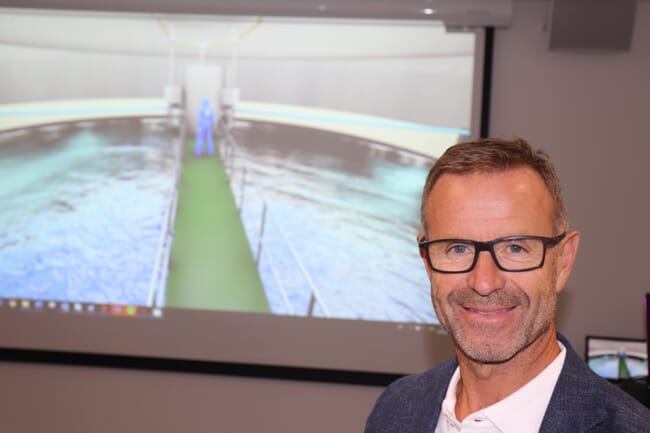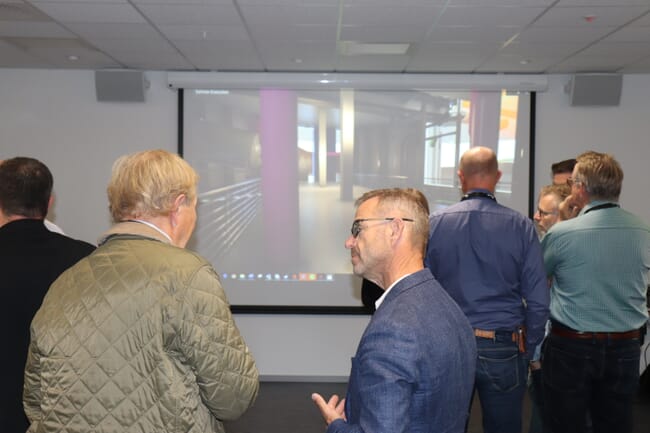Salmon Evolution gave visitors the chance to see detailed plans of a site capable of growing 30,000 tonnes of market-sized salmon a year.

“We’re hoping to break ground within a year,” Odd Tore Finnøy, CEO of the company, explained to The Fish Site. “We have the licences and now we’re looking into the technical development and raising the investment needed, which will probably be in the region of 1 billion kroner (£91.8 million).”
Finnøy, who brings considerable experience in the maritime industry and leads a team of 10 in realising the project, has ambitious plans to make the Salmon Evolution site unique – not least by relying on water exchange, rather than the use of biofilters, to ensure optimum water quality for salmon growth and health.
“We won’t use biofilters, we’re instead using water exchange, we’re positioned right beside a 200m deep fjord which gives us an almost unlimited supply of water and we’re planning on exchanging 50,000m3 every hour,” he explains.
Finnøy is also keen to emphasise the green credentials of the new site, which is located near Molde and will, he says, employ 100 people once it's fully up and running.
“It’s going to be very sustainable, we’ve been thinking about the circular economy from the beginning – the site will be fully powered by hydroelectricity and the fish waste will be converted into both biogas and fertiliser, which can be used by the local cattle farming sector,” he explains.

Despite the projected expense of the project, Finnøy believes that he will be able to compete – in price terms – with conventionally-raised salmon.
“I think we can compete with sea-based salmon producers because the licence is free and there will be very few costs associated with fish-health issues because fish welfare will be so good,” he predicts.
However, he is realistic about the overall potential of land-based farming - believing it to be a means of supplementing, not replacing, traditional net pen production.
“There’s not enough suitable land to bring all sea-based production onto the land,” he points out. “But I think land-based systems like this are one of the best ways for the Norwegian salmon sector to continue to grow”.


